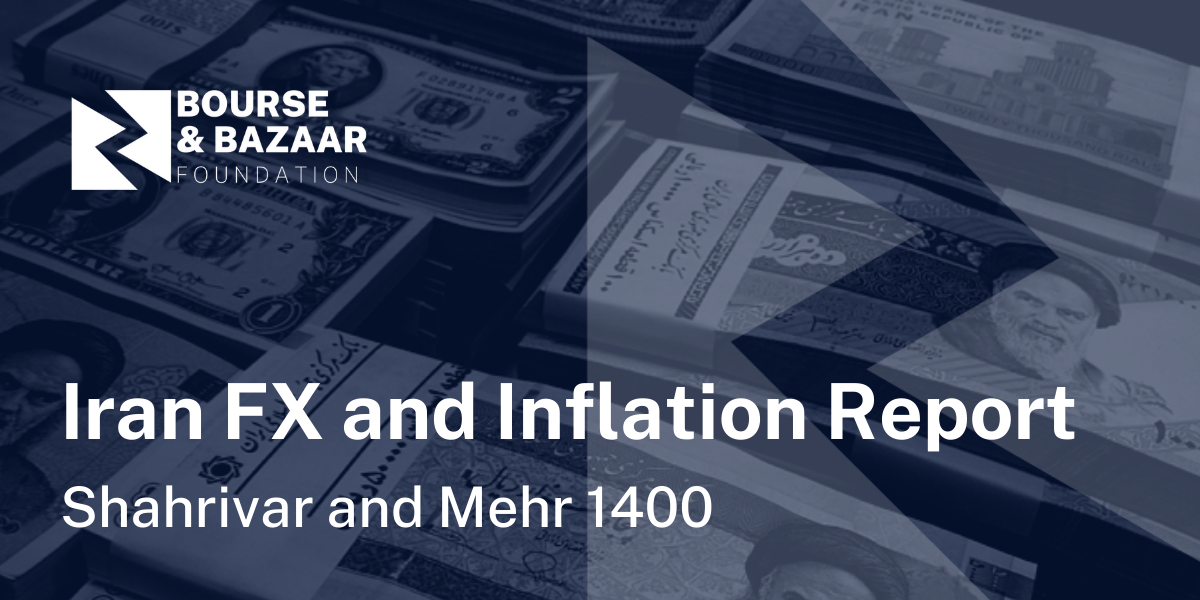Iran FX and Inflation Report - Shahrivar and Mehr 1400 (August 23 – October 22)
Editor’s Note: The data for Shahrivar and Mehr are being released as one report due to author availability last month.
The Iranian calendar months of Shahrivar and Mehr 1400 (August 23 – October 22, 2021) saw a steady decrease in the value of the rial as the free-market rate rose to its highest point since November 2020. While monthly inflation fell between Mehr and Shahrivar, prices continued to rise in key categories. The annual inflation rate for food products reached 61 percent.
___STEADY_PAYWALL___
In the FX market, the free-market rate reached a high of IRR 282,500 in August and a second peak of IRR 284,500 in September, the highest rates since November 2020. The free-market rate showed little volatility over the course of the two months. Likewise, the NIMA rate trended steadily upward. Given the steady increase in the NIMA rate, the gap between the two rates narrowed from IRR 46,582 to IRR 40,385 by the end of the period.
According to the data released by the Statistical Centre of Iran (SCI), the consumer price index (CPI) reached 364.1 by the end of Mehr, marking a monthly inflation rate of 3.7 percent, down 0.2 percent from Shahrivar. Annual inflation fell from 45.8 percent in Shahrivar to 45.5 percent in Mehr, while the point-to-point inflation rate was 43.7 percent and 39.2 percent in Shahrivar and Mehr respectively. The fall in monthly inflation was mostly attributable to an easing in the rise of goods prices. Monthly goods inflation was 4.7 percent in Shahrivar, falling to 3.9 percent in Mehr. Food prices continue to be a primary contributor to overall inflation. According to the new data from SCI, food prices in Mehr were 61 percent higher than in the same month last year.
Spurred in part by rising food prices, there has been a renewed debate in Iran over the risks associated with eliminating the provision of subsidised foreign currency to importers at the dollar exchange rate of IRR 42,000. The Central Bank of Iran has already significantly reduced the number of goods that are eligible to be imported with the benefit of subsidised foreign currency. For this reason, economist Zahra Kaviani believes that the elimination of the subsidies will have a limited impact on prices, particularly on food prices. The benefits of such a move include reducing fiscal pressures and also increasing the supply of foreign currency so as to reduce the NIMA rate. This view was echoed by Vienna-based economist Bijan Khajepour in his recent analysis of the debate taking place in Iran.
Other observers have argued against such a move. Kamran Nadri, a professor of economics at Iman Sadegh University, an institution with which many senior policymakers in the Raisi administration are affiliated, have warned that elimination of the subsidised rate would feed inflation expectations. In his view, the abuses of the subsidised rate, which involve importers using currency allocations to import non-essential goods, are best addressed with better monitoring and enforcement. Economist Hossein Raghfar has warned that eliminating the subsidy could feed public dissatisfaction and even unrest.




